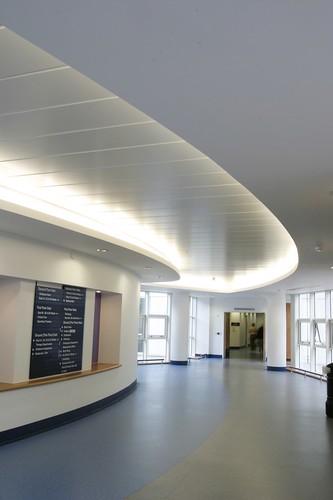We’ve all heard of the “Hawthorne Effect”, right? Studies done between 1924-1932 at the Hawthorne Works (a Western Electric facility located outside of Chicago) attempted to study the effects of lowering or raising the levels of light in the building on employee productivity. As students of OD, we learned that workers responded with higher productivity levels NOT because of higher or lower levels of light, but primarily because they were being shown some interest by management. In fact, other changes such as maintaining clean work stations, clearing floors of obstacles, and even relocating workstations resulted in increased productivity for short periods of time.
A quick Google search on the impact of environment on productivity brought up several studies on the impact of such things as temperature, visual comfort and view, and office layouts. Once such article cited two cases of note:
A Rocky Mountains Institute report relating “green” or sustainable buildings to human productivity reviewed eight case studies, two of them with remarkable results. The first concerned a new Wal-Mart, in Lawrence, Kan., designed to harvest optimal daylight through skylights installed on half of the roof. According to Wal-Mart, the sales per square foot located within the departments with access to natural light are significantly higher compared with sales in departments located under the conventional roof. Sales were also higher than in identical departments in other stores without access to skylights. In fact, Wal-Mart employees prefer to work in the departments with daylight.
In the new Lockheed Building 157 in Sunnyvale, Calif., several daylight strategies were used to enhance visual comfort–and they reduced Lockheed’s artificial lighting cost by 75%. With daylight generating less heat than artificial lighting, space cooling loads have also been reduced. Lockheed has not directly published its data related to productivity gain, but the project architect reported that Lockheed officials have indicated an increase in productivity by 15% on the first major project undertaken in the new facility compared with previous experience in their old facility.
These are indeed encouraging.
I recently visited a former client – a major player in the life sciences and biomedical laboratory instrument arena – and they had just completed a move into a completely redesigned, green facility (LEED Certified). My client beamed with excitement and pride as she gave Jeremy and me a tour of the facility. It’s too soon to tell if there are any productivity gains out of these changes.
So here’s my question for discussion? What are employers doing to make work places more productive from the standpoint of interior design, landscaping, natural lighting, open work spaces, etc.? Are you considering switching to LED lighting? Do you have a business case for these efforts or measurable improvements in productivity? What are your thoughts?







